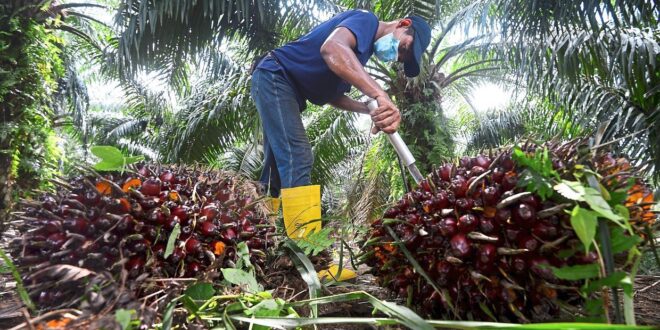PETALING JAYA: Palm oil industry experts believe the industry and edible oils market fundamentals support prices of crude palm oil (CPO) to remain above the RM3.800-a-tonne level in the first half of the year (1H24) and moderate in 2H24.
The key catalyst to look out for the trajectory in the price trend will include the weather impact on the US edible oil-related crops, particularly if a La Nina emerges and changes in global biofuel policies.
The situation in the Black Sea and the Red Sea, changes in Indonesia’s policy as well as the development of new sustainable aviation fuel and marine biofuel policies will impact demand, RHB Research said based on speaker presentations at the 35th annual Palm & Lauric Oils Price Outlook Conference & Exhibition (POC 2024) in Kuala Lumpur this week.
“The capricious climate will continue to take centre stage in agriculture in 2024 and we cannot be bearish on agriculture prices this year.
“Vegetable oil prices have been below expectations in 2024 so far, due to good palm oil production in 2023, the strong US dollar and the shortage of US dollars in major palm markets like Pakistan, Bangladesh, Nigeria, Iran and Egypt as well as the weak performance of China’s economy,” the research house said quoting industry analyst Dorab Mistry of Godrej International.
The bullish outlook for CPO is backed by stagnating palm production growth in Malaysia and Indonesia due to lack of replanting, sustainability and certification schemes, and slowdown in new plantings.
Indonesia’s palm production in 2024 is, however, forecast to grow by 2.2% driven mainly by the addition of new harvesting areas.
Palm oil could also get a tailwind from further growth of the energy sector worldwide. Currently, 20% of total world consumption of the 17 oils and fats is absorbed by the energy sector.
“In the years ahead, there will be a slowdown in demand growth for biodiesel and hydrogenated vegetable oils, but demand for sustainable aviation fuel (SAF) will emerge.
“Insufficient growth in world supplies of SAF feedstocks like used cooking oil, tallow and other non-food feedstock in the years ahead will keep dependence high for palm oil, soyoil and rapeseed oil as a feedstock for biofuel production,” RHB Research added.
TA Research said palm oil production is expected to see a marginal growth of about 0.2 million to 0.3 million tonnes in 2024, the smallest growth in four years.
Malaysia’s palm oil production is forecast to be around 18.6 million tonnes this year, while Indonesia will be virtually stagnating in 2024 while world production of the soybean crop is expected to rise to 391 million tonnes in 2023/24 compared to 372 million tonnes one year ago, mainly driven by huge growth from Argentina.
“South America will show a record bumper crop of 215 million tonnes versus 196 million tonnes a year ago.
“Oil World’s Thomas Mielke expects the current premiums of palm oil over sunflower oil and soyoil prices will narrow in next several weeks, driven by increased prices for sunflower oil and soyoil.
“He believes the rising biofuels production in North and South America will support prices,” it noted.
Thus, RHB Research is “neutral” on the sector and made no changes to its CPO price assumptions of RM3,900 per tonne for 2024.
TA Research, meanwhile, reiterated its “underweight” call on the sector, but made no change to its 2024 average CPO price estimate of RM4,000 a tonne.
“We would review our assumptions if South America’s soybean supply turned out lower than the market’s expectation, a more promising demand recovery story and significant reduction in production costs,” it added.
 BeritaKini.biz Berita Viral Terkini di Malaysia
BeritaKini.biz Berita Viral Terkini di Malaysia





